Research on Optimal Torque Control of Turning Energy Consumption for EVs with Motorized Wheels
Abstract
1. Introduction
2. Establishment of a Dynamic Model and Analysis of Longitudinal Force
2.1. Establishment of 3-DOF Vehicle Dynamic Model
2.2. Analysis of Vehicle Longitudinal Force Based on the Change of FWSA
2.3. Analysis of Vehicle Longitudinal Force Based on Tire Cornering Characteristics
3. GA-PSO Optimal Control
3.1. The Optimal Solution with GA-PSO
3.2. Torque Optimization Algorithm Based on GA-PSO
- (1).
- Initialize the variable.
- (2).
- Evaluate the quality of each particle. The output power of the motor can be expressed as
- (3).
- Use PSO to update the population, forming a new population, .
- (4).
- Introduce the crossover and mutation of GA. Crossover on the , Equation (22) is expressed as a crossover operation on a pair of genes ( & ) in the chromosomes ( & ) of the population.
- (5).
- Update the individual and the group optimal value of the current population. With step (4), carry out the GA on the variables, using the fitness function to calculate the fitness value of the new individual compared with the original individual and the group optimal values. If the current result is the best, replace the original result.
- (6).
- Determine whether the algorithm is terminated. Compared with the termination condition, determine whether the number of iterations is reached. If it is, the current group optimal value will be output; otherwise, the algorithm will continue until the termination condition is met.
4. Simulation Analysis of Torque Optimization Control Strategy Based on Vehicle Dynamics
4.1. Optimal Torque Distribution Coefficient in Turning Conditions
4.2. Selection of Optimal Torque Distribution Coefficient Based on GA-PSO
5. Simulation Analysis of Torque Optimization Control Strategy Based on Motor Working Point
5.1. Power Matching of Hub Motors
5.2. Selection of Optimal Torque Distribution Coefficient Based on Motor Working Point
6. Hardware-in-the-Loop Test Verification
7. Conclusions
Author Contributions
Funding
Institutional Review Board Statement
Informed Consent Statement
Data Availability Statement
Conflicts of Interest
References
- Wang, J.; Wang, Q.; Jin, L.; Song, C. Independent wheel torque control of 4WD electric vehicle for differential drive assisted steering. Mechatronics 2011, 21, 63–76. [Google Scholar] [CrossRef]
- Wang, J.; Yang, B.; Wang, Q.; Jiantu, N.I. Review on Vehicle Drive Technology of Torque Vectoring. J. Mech. Eng. 2020, 56, 92. [Google Scholar]
- Liu, J.; Zhuang, W.; Zhong, H.; Wang, L.; Chen, H.; Tan, C.-A. Integrated energy-oriented lateral stability control of a four-wheel-independent-drive electric vehicle. Sci. China Technol. Sci. 2019, 62, 2170–2183. [Google Scholar] [CrossRef]
- Oh, K.; Joa, E.; Lee, J.; Yun, J.; Yi, K. Yaw Stability Control of 4WD Vehicles Based on Model Predictive Torque Vectoring with Physical Constraints. Int. J. Automot. Technol. 2019, 20, 923–932. [Google Scholar] [CrossRef]
- Park, J.-Y.; Heo, S.-J.; Kang, D.-O. Development of Torque Vectoring Control Algorithm for Front Wheel Driven Dual Motor System and Evaluation of Vehicle Dynamics Performance. Int. J. Automot. Technol. 2020, 21, 1283–1291. [Google Scholar] [CrossRef]
- Koehler, S.; Viehl, A.; Bringmann, O.; Rosenstiel, W. Improved energy efficiency and vehicle dynamics for battery electric vehicles through torque vectoring control. In Proceedings of the 2015 IEEE Intelligent Vehicles Symposium (IV), Seoul, Korea, 28 June–1 July 2015; IEEE: Piscataway, NJ, USA, 2015; pp. 749–754. [Google Scholar]
- Wang, J. Study on Differential Drive Assist Steering for Electric Vehicle with Independent-Motorized-Wheel-Drive. Ph.D. Thesis, Jilin University, Changchun, China, 2009. [Google Scholar]
- Alipour, H.; Sabahi, M.; Sharifian, M.B.B. Lateral stabilization of a four wheel independent drive electric vehicle on slippery roads. Mechatronics 2015, 30, 275–285. [Google Scholar] [CrossRef]
- Wang, J.; Yu, T.; Sun, N.; Fu, T. Torque Vectoring Control of Rear-Wheel-Independent-Drive Vehicle after Cornering Efficiency Improvement. J. Hunan Univ. (Nat. Sci.) 2020, 47, 9–17. [Google Scholar]
- Yu, S.; Li, W.; Liu, Y.; Chen, H. Steering Stability Control of Four-Wheel-Drive Electric Vehicle. Control. Theory Appl. 2021, 38, 12. [Google Scholar]
- Sun, W.; Wang, J.; Wang, Q.; Assadian, F.; Fu, B. Simulation investigation of tractive energy conservation for a cornering rear-wheel-independent-drive electric vehicle through torque vectoring. Sci. China Technol. Sci. 2018, 61, 257–272. [Google Scholar] [CrossRef]
- Wong, A.; Kasinathan, D.; Khajepour, A.; Chen, S.K.; Litkouhi, B. Integrated torque vectoring and power management framework for electric vehicles. Control. Eng. Pract. 2016, 48, 22–36. [Google Scholar] [CrossRef]
- Andrzej, S.; Ireneusz, P.; Wojciech, C. Fuel Cell Electric Vehicle (FCEV) Energy Flow Analysis in Real Driving Conditions (RDC). Energies 2021, 14, 5018. [Google Scholar]
- Serpi, A.; Porru, M. Modelling and Design of Real-Time Energy Management Systems for Fuel Cell/Battery Electric Vehicles. Energies 2019, 12, 4260. [Google Scholar] [CrossRef]
- Mariusz, I.; Marianna, J. An Efficient Hybrid Algorithm for Energy Expenditure Estimation for Electric Vehicles in Urban Service Enterprises. Energies 2021, 14, 2004. [Google Scholar]
- Irfan, U.; Liu, K.; Toshiyuki, Y.; Muhammad, Z.; Arshad, J. Electric vehicle energy consumption prediction using stacked generalization: An ensemble learning approach. Int. J. Green Energy 2021, 18, 896–909. [Google Scholar]
- Pierpaolo, P.; Ivan, A.; Cesare, P. Optimal Energy Management for Hybrid Electric Vehicles Based on Dynamic Programming and Receding Horizon. Energies 2021, 14, 3502. [Google Scholar]
- Rossa, F.D.; Mastinu, G.; Piccardi, C. Bifurcation analysis of an automobile model negotiating a curve. Veh. Syst. Dyn. 2012, 50, 1539–1562. [Google Scholar] [CrossRef]
- Inagaki, S.; Kushiro, I.; Yamamoto, M. Analysis on Vehicle Stability in Critical Cornering Using Phase-Plane Method. JSAE Rev. 1995, 16, 216. [Google Scholar]
- Wang, J. Steering Stability Control of Four-Wheel Drive Vehicle with Hub Motors. M.D. Thesis, Beijing Institute of Technology, Beijing, China, 2015. [Google Scholar]
- Ando, K.; Sawase, K.; Takeo, J. Analysis of tight corner braking phenomenon in full-time 4WD vehicles. JSAE Rev. 2002, 23, 83–87. [Google Scholar] [CrossRef]
- Sun, W.; Wang, Q.N.; Wang, J.N. Yaw-moment control of motorized vehicle for energy conservation during cornering. Jilin Daxue Xuebao/J. Jilin Univ. 2018, 48, 11–19. [Google Scholar]
- Slowik, A. Application of evolutionary algorithm to design minimal phase digital filters with non-standard amplitude characteristics and finite bit word length. Bull. Pol. Acad. Sci. Tech. Sci. 2011, 59, 125–135. [Google Scholar] [CrossRef][Green Version]
- Wen, Z.; Liu, Y. Reactive power optimization based on PSO in a practical power system. In Power Engineering Society General Meeting; IEEE: Piscataway, NJ, USA, 2004. [Google Scholar]
- Bakare, G.A.; Chiroma, I.N.; Venayagamoorthy, G.K. Comparison of PSO and GA for K-Node Set Reliability Optimization of a Distributed System. In Proceedings of the 2006 IEEE Swarm Intelligence Symposium, Indianapolis, IN, USA, 12–14 May 2006. [Google Scholar]
- Roberge, V.; Tarbouchi, M.; LaBonte, G. Comparison of Parallel Genetic Algorithm and Particle Swarm Optimization for Real-Time UAV Path Planning. IEEE Trans. Ind. Inform. 2012, 9, 132–141. [Google Scholar] [CrossRef]
- Liu, J.C.; Chen, Y.Z. A BPNN-Based Speed Prediction Method with GA-PSO Optimization Algorithm. J. Transp. Syst. Eng. Inf. Technol. 2017, 17, 40–47. [Google Scholar]
- Gao, Y.; Zhang, R. A network traffic prediction based on bp neural network optimized by a GA-PSO algorithm. Comput. Appl. Softw. 2014, 31, 106–110. [Google Scholar]
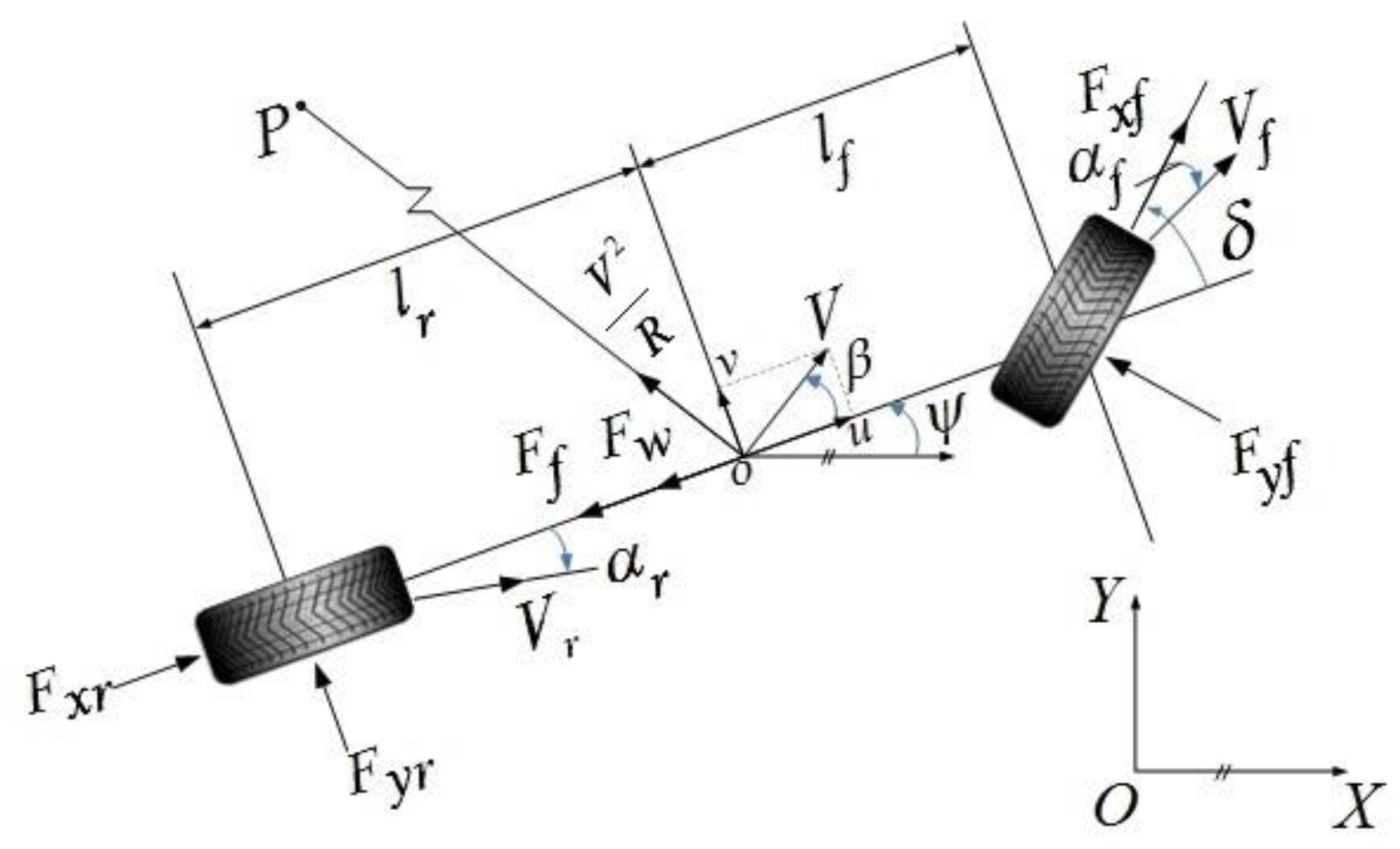
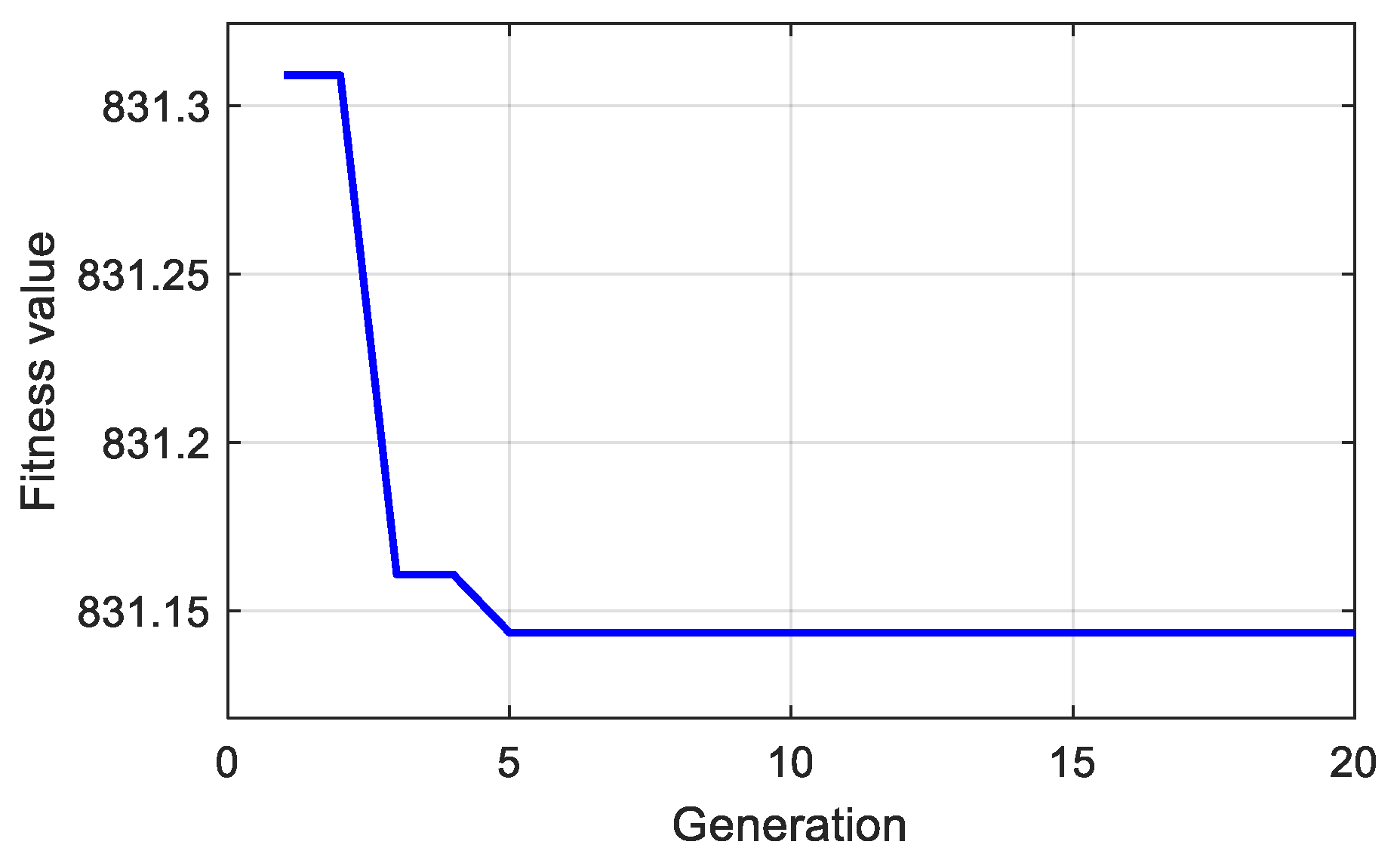
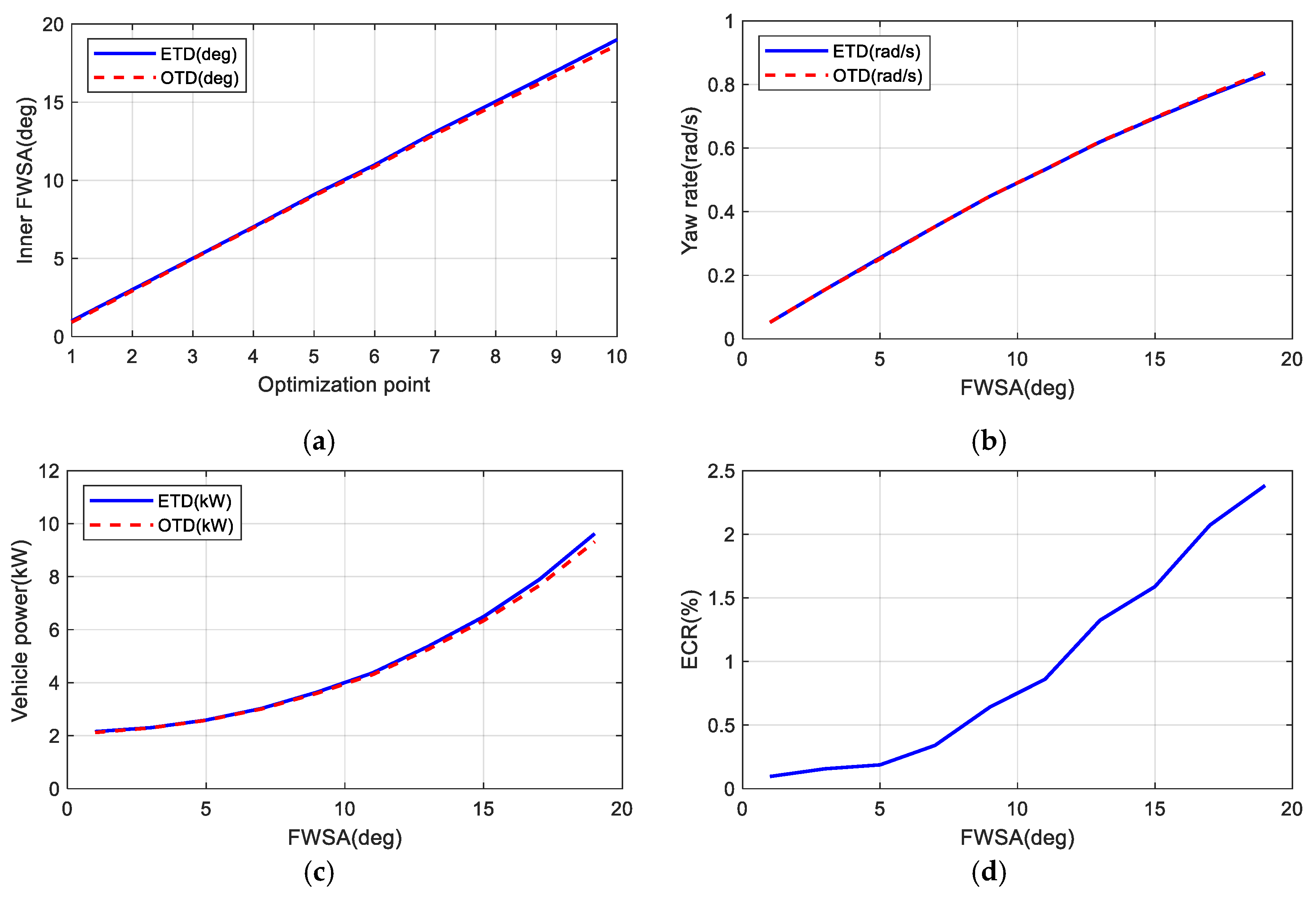


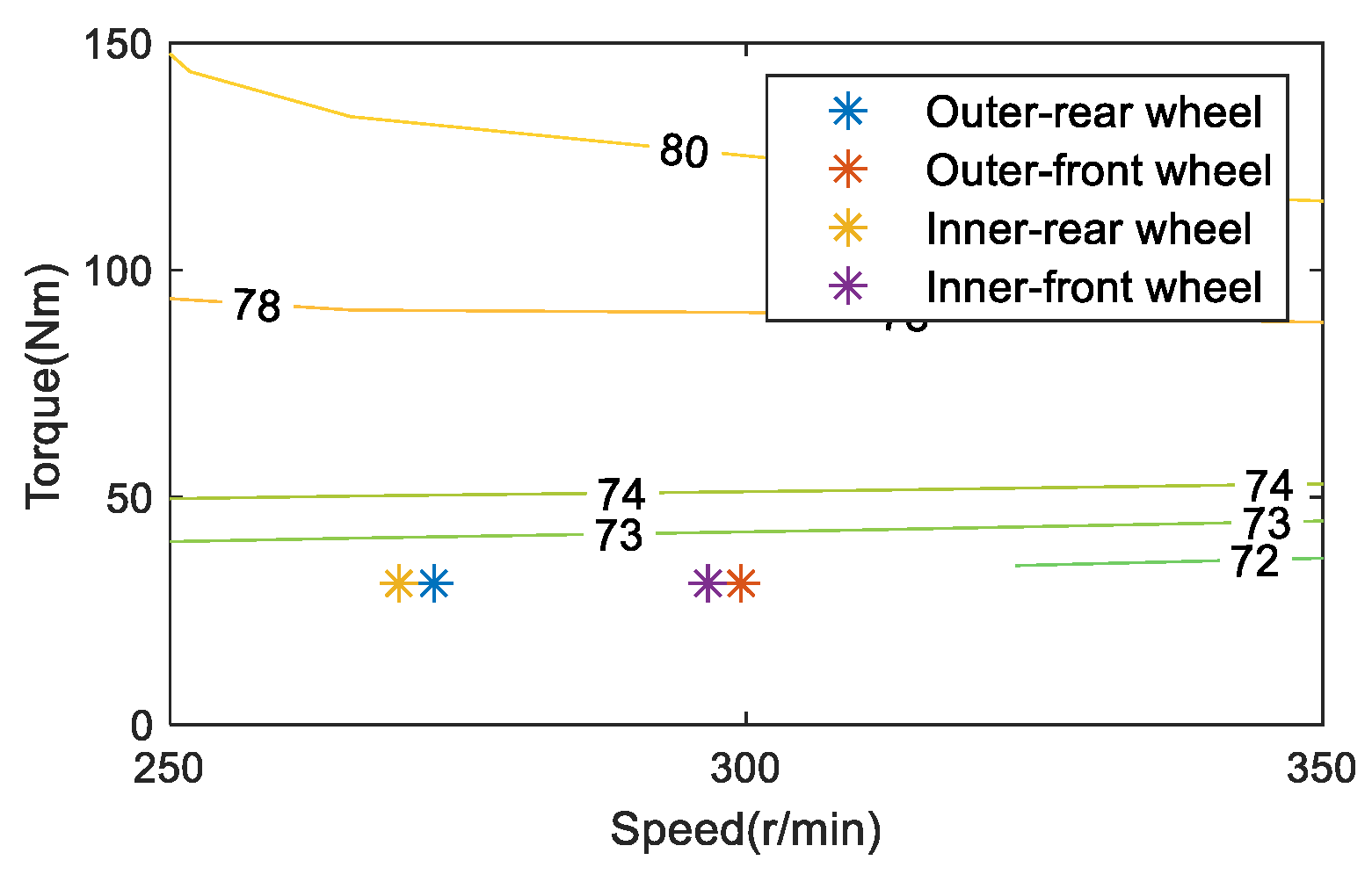
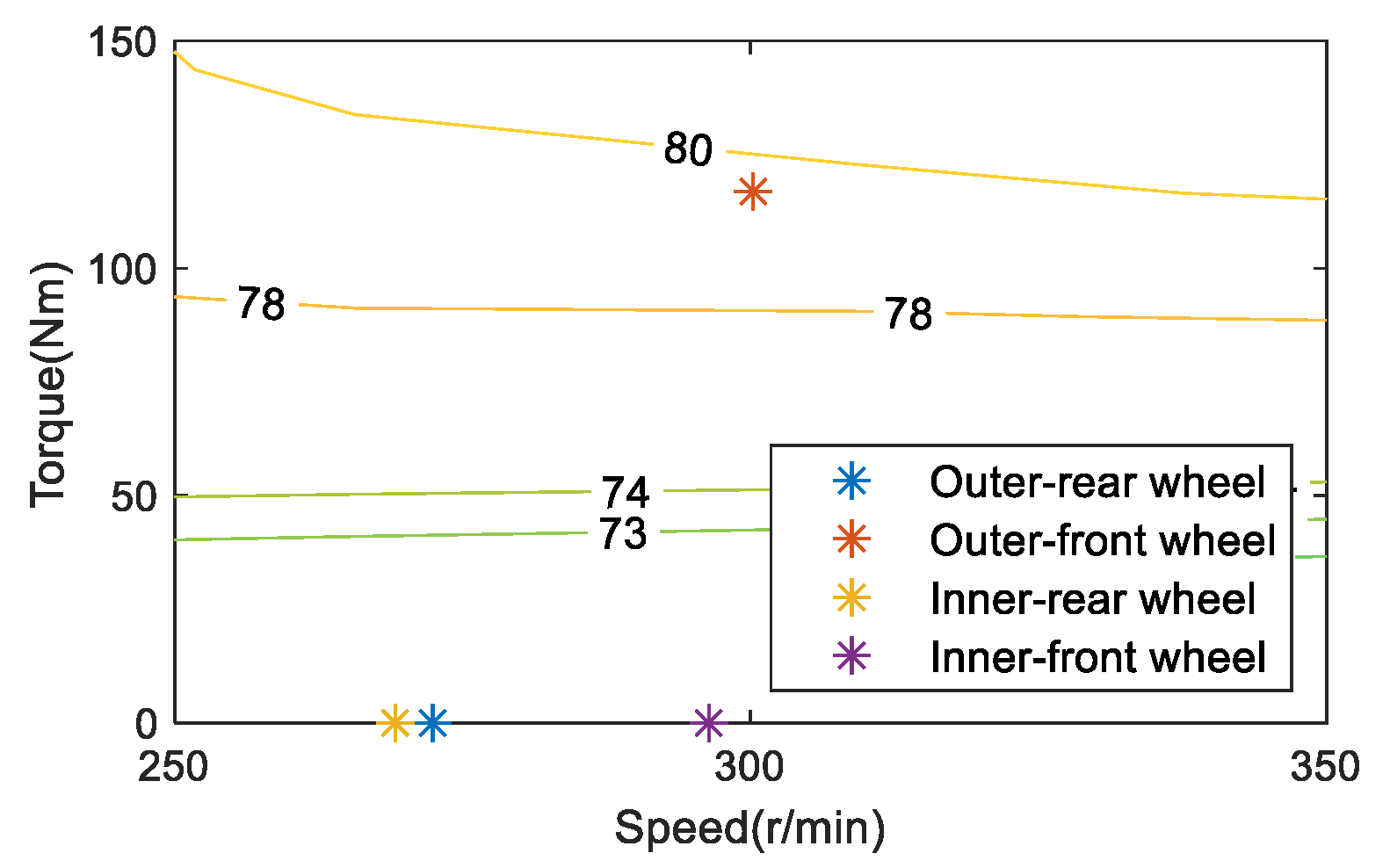
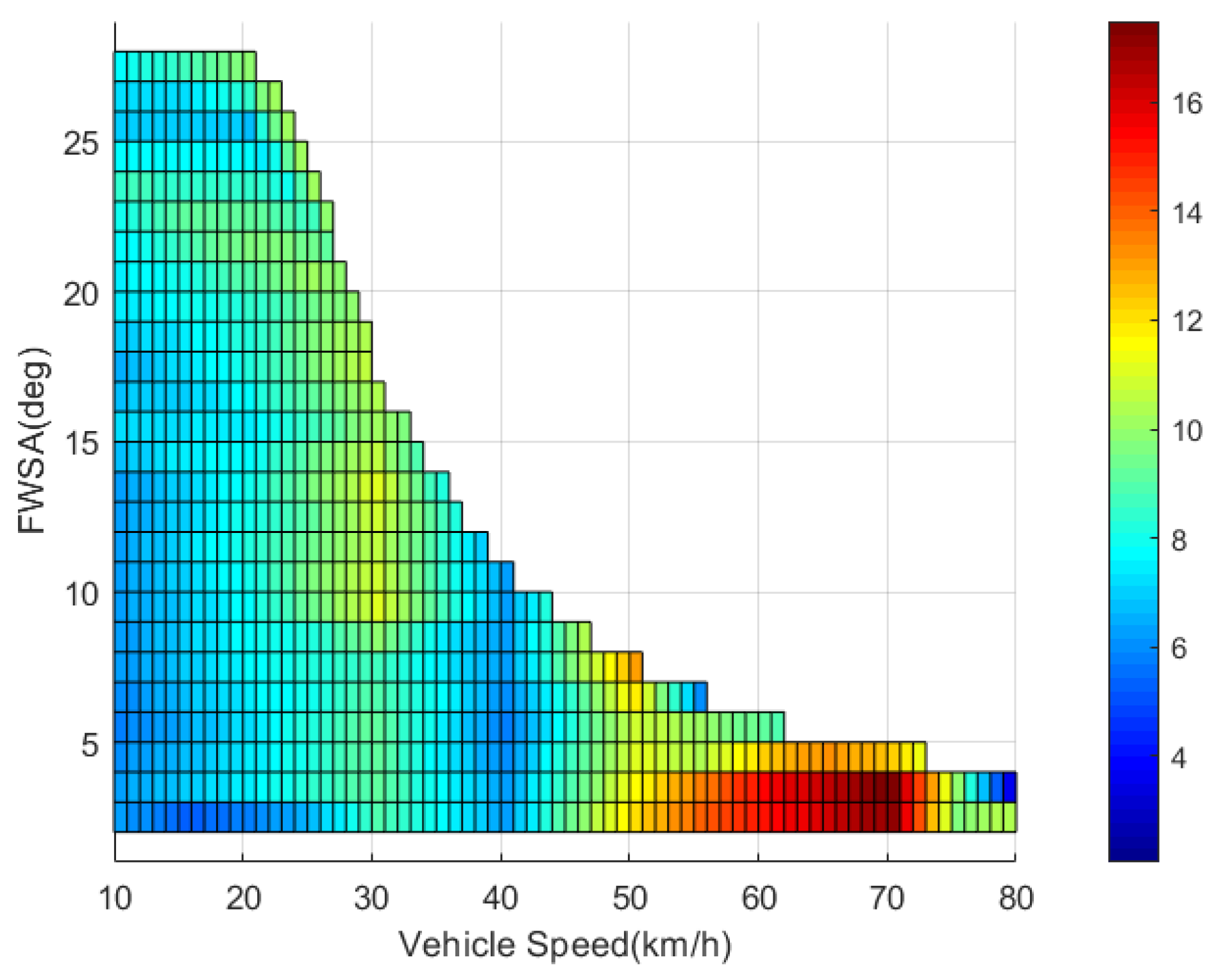
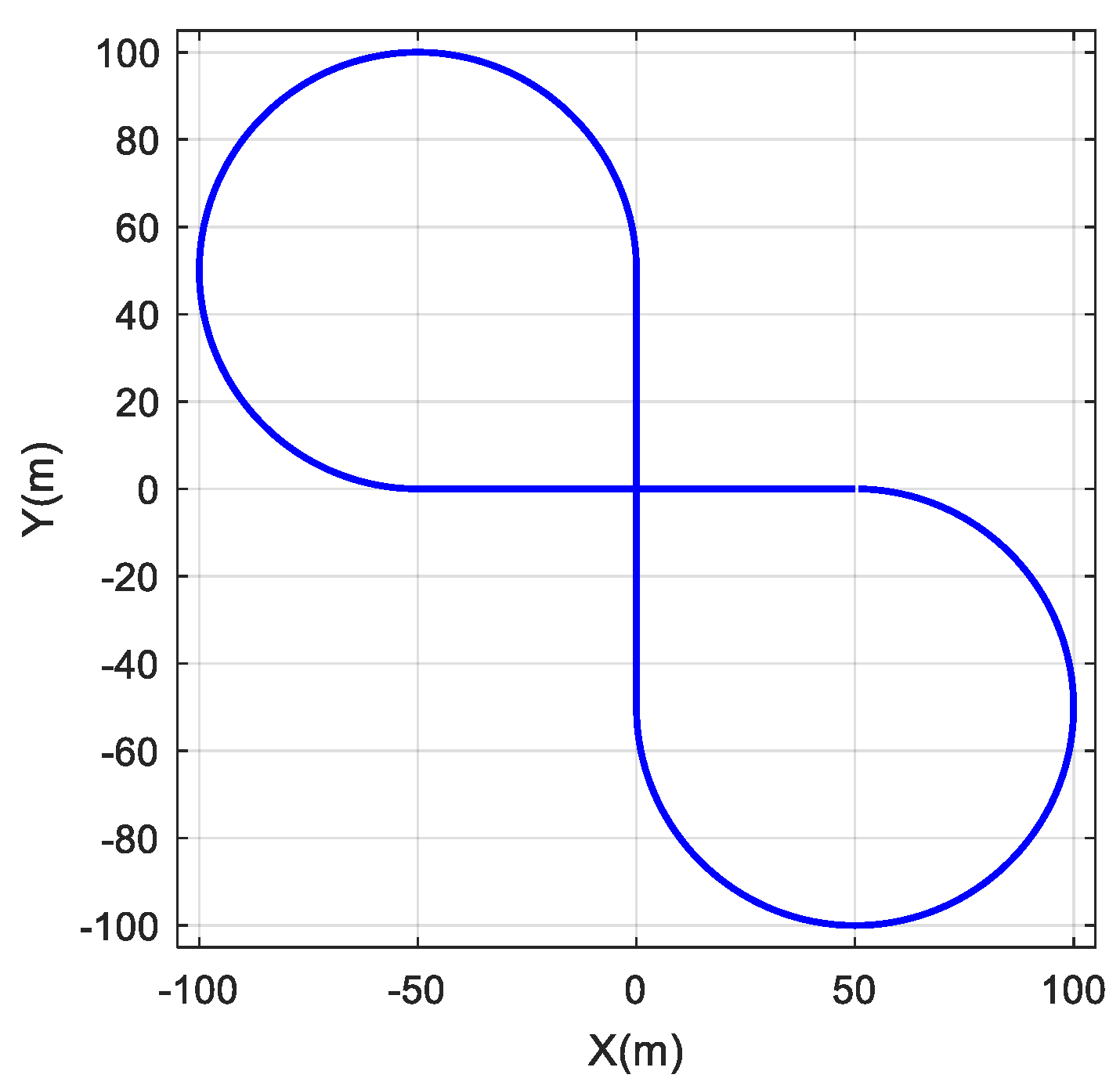
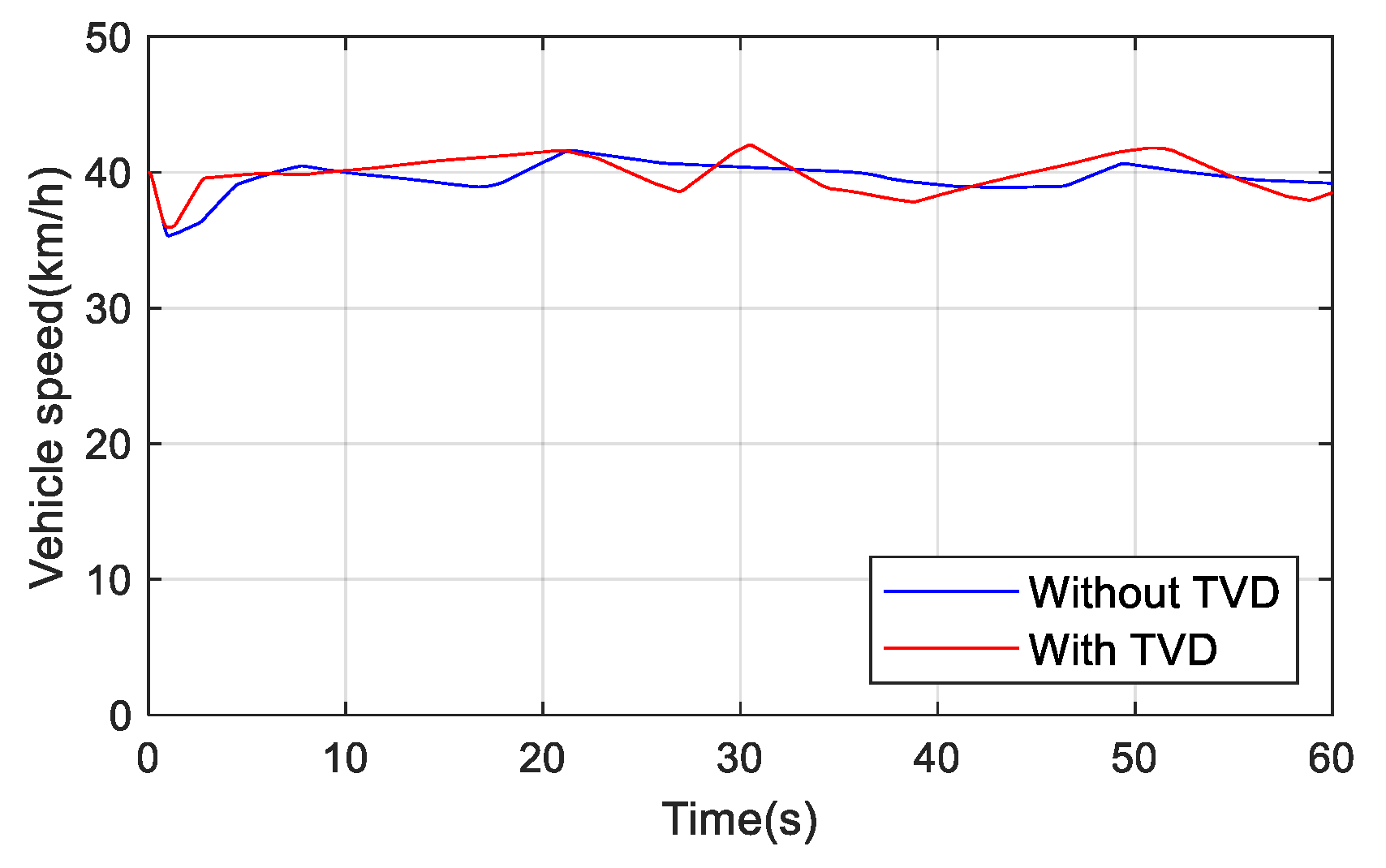
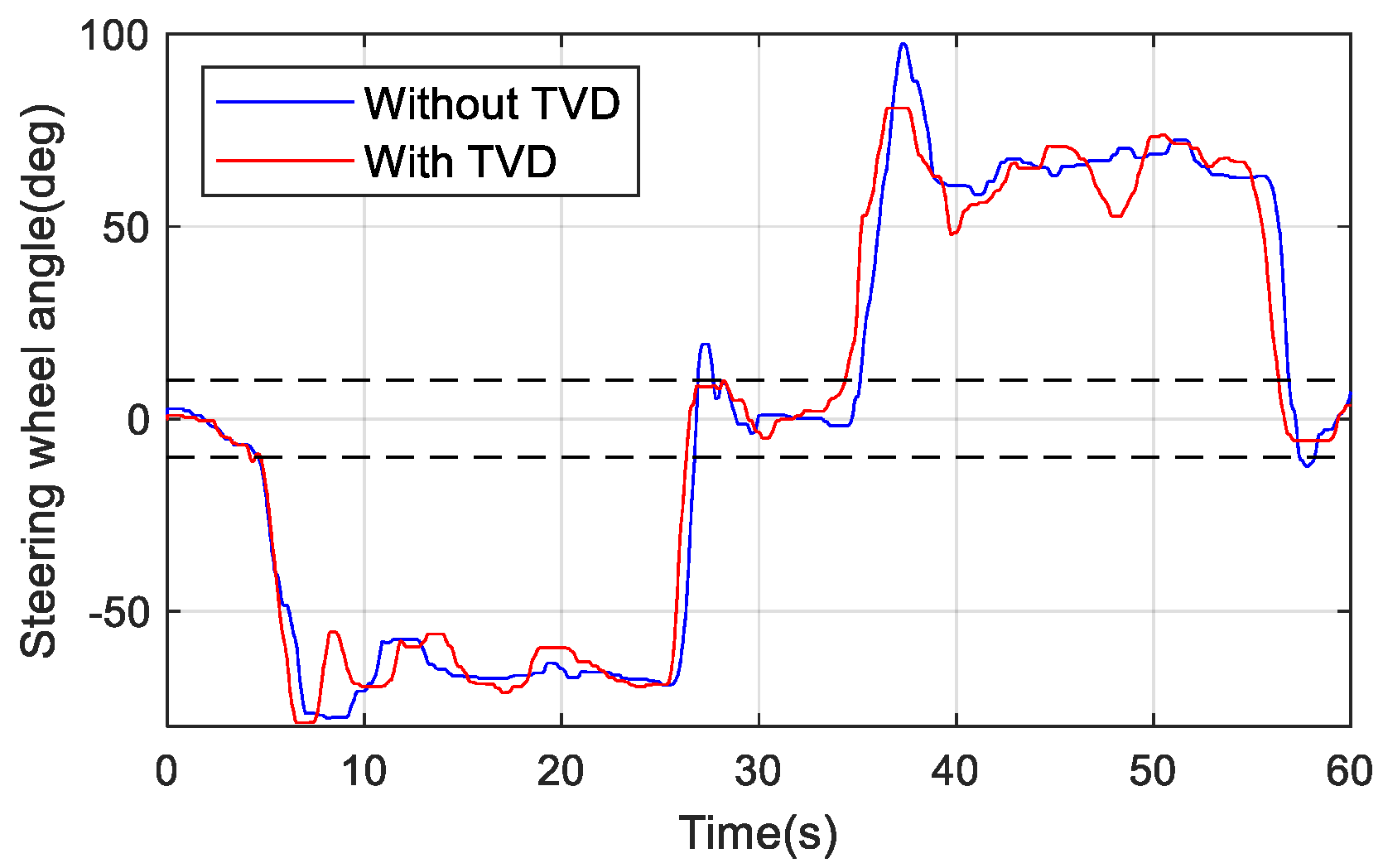
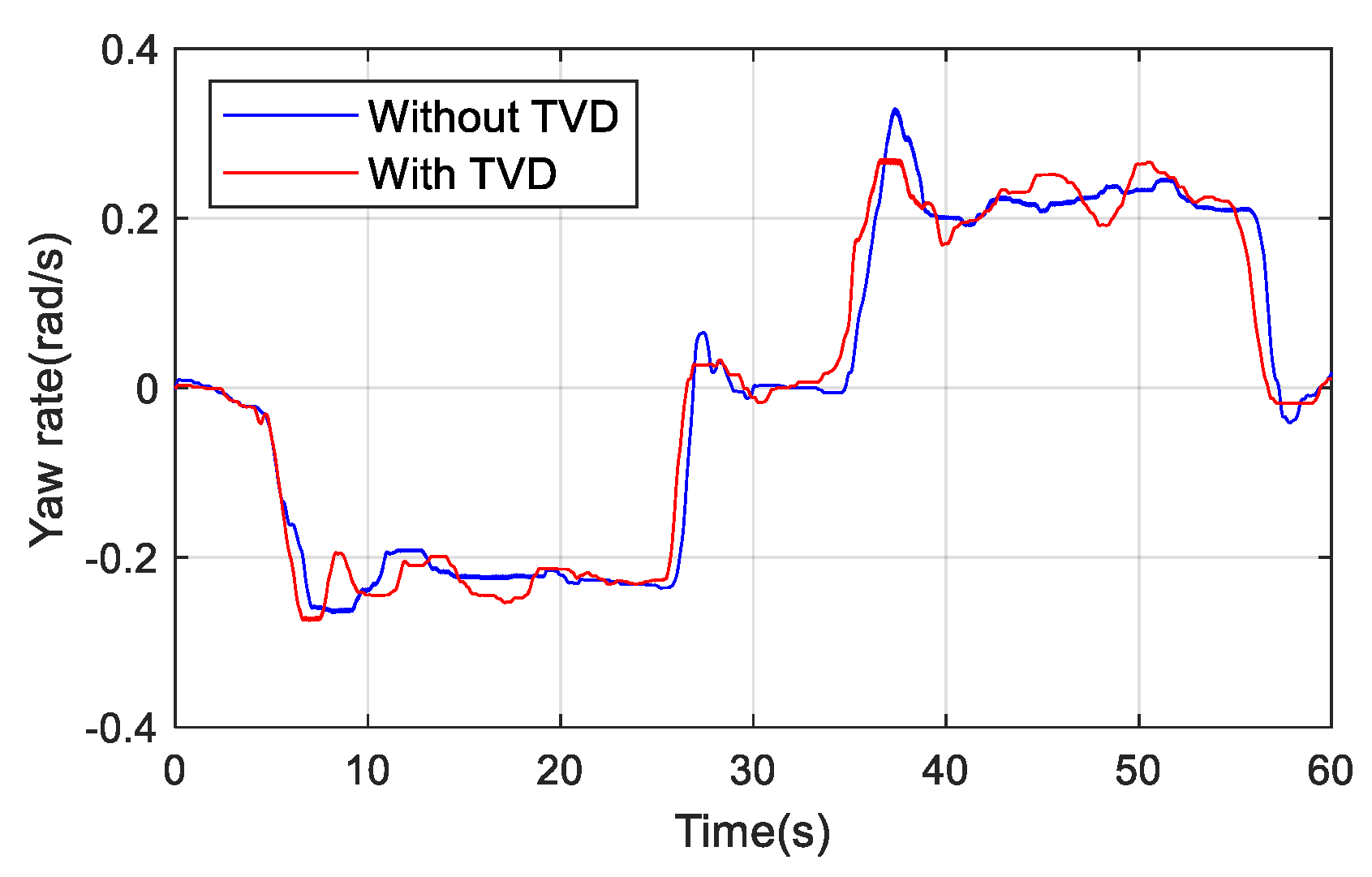

| Optimizing Parameters | Value |
|---|---|
| Chromosome code length | 3 |
| Crossover probability | 0.7 |
| Mutation probability | 0.3 |
| Optimal position step size of individual | 1.49445 |
| Optimal position step size of group | 1.49445 |
| Generation amount | 20 |
| Population size | 20 |
| Maximum speed of particle update | 1 |
| Minimum speed of particle update | −1 |
| FWSA of Equal Torque (deg) | Vehicle Speed (km/h) | ||||
|---|---|---|---|---|---|
| 10 | 20 | … | 70 | 80 | |
| 1 | [0.7836,0.4377,0.2216] | [0.6451,0.4957,0.2305] | … | [0.7044,0.2799,0.2979] | [0.8512,0.4347,0.1758] |
| 3 | [0.7630,0.4130,0.3069] | [0.7581,0.4325,0.2001] | … | [ 1 ,0.2273, - ] | [ ,0.2722, - ] |
| 5 | [0.8666,0.3516,0.4099] | [0.8617,0.3979,0.2959] | … | [0.9371,0.3264,0.4155] | - |
| 7 | [0.8832,0.3161,0.3768] | [ 1 ,0.4227, - ] | … | - | - |
| … | … | … | … | … | … |
| 27 | [ 1 ,0.2271, - ] | [ 1 ,0.3994, - ] | … | - | - |
| 29 | [ 1 ,0.2134, - ] | - | … | - | - |
| FWSA of Equal Torque (deg) | Vehicle Speed (km/h) | ||||
|---|---|---|---|---|---|
| 10 | 20 | … | 70 | 80 | |
| 1 | [ 1 , 0 , - ] | [ 1 , 0 , - ] | … | [ 0 , - , 0 ] | [0.3158,0.3363,0.4353] |
| 3 | [ 1 , 0 , - ] | [ 1 , 0 , - ] | … | [ 1 , 0 , - ] | [ 1 ,0.4800, - ] |
| 5 | [ 0 , - , 0 ] | [ 0 , - , 0 ] | … | [0.0509,0.2277,0.4832] | - |
| 7 | [ 1 , 0 , - ] | [ 1 , 0 , - ] | … | - | - |
| … | … | … | … | … | … |
| 27 | [ 1 , 0 , - ] | [ 1 , 0 , - ] | … | - | - |
| 29 | [ 1 , 0 , - ] | [ 1 , 0 , - ] | … | - | - |
Publisher’s Note: MDPI stays neutral with regard to jurisdictional claims in published maps and institutional affiliations. |
© 2021 by the authors. Licensee MDPI, Basel, Switzerland. This article is an open access article distributed under the terms and conditions of the Creative Commons Attribution (CC BY) license (https://creativecommons.org/licenses/by/4.0/).
Share and Cite
Sun, W.; Rong, J.; Wang, J.; Zhang, W.; Zhou, Z. Research on Optimal Torque Control of Turning Energy Consumption for EVs with Motorized Wheels. Energies 2021, 14, 6947. https://doi.org/10.3390/en14216947
Sun W, Rong J, Wang J, Zhang W, Zhou Z. Research on Optimal Torque Control of Turning Energy Consumption for EVs with Motorized Wheels. Energies. 2021; 14(21):6947. https://doi.org/10.3390/en14216947
Chicago/Turabian StyleSun, Wen, Juncai Rong, Junnian Wang, Wentong Zhang, and Zidong Zhou. 2021. "Research on Optimal Torque Control of Turning Energy Consumption for EVs with Motorized Wheels" Energies 14, no. 21: 6947. https://doi.org/10.3390/en14216947
APA StyleSun, W., Rong, J., Wang, J., Zhang, W., & Zhou, Z. (2021). Research on Optimal Torque Control of Turning Energy Consumption for EVs with Motorized Wheels. Energies, 14(21), 6947. https://doi.org/10.3390/en14216947







